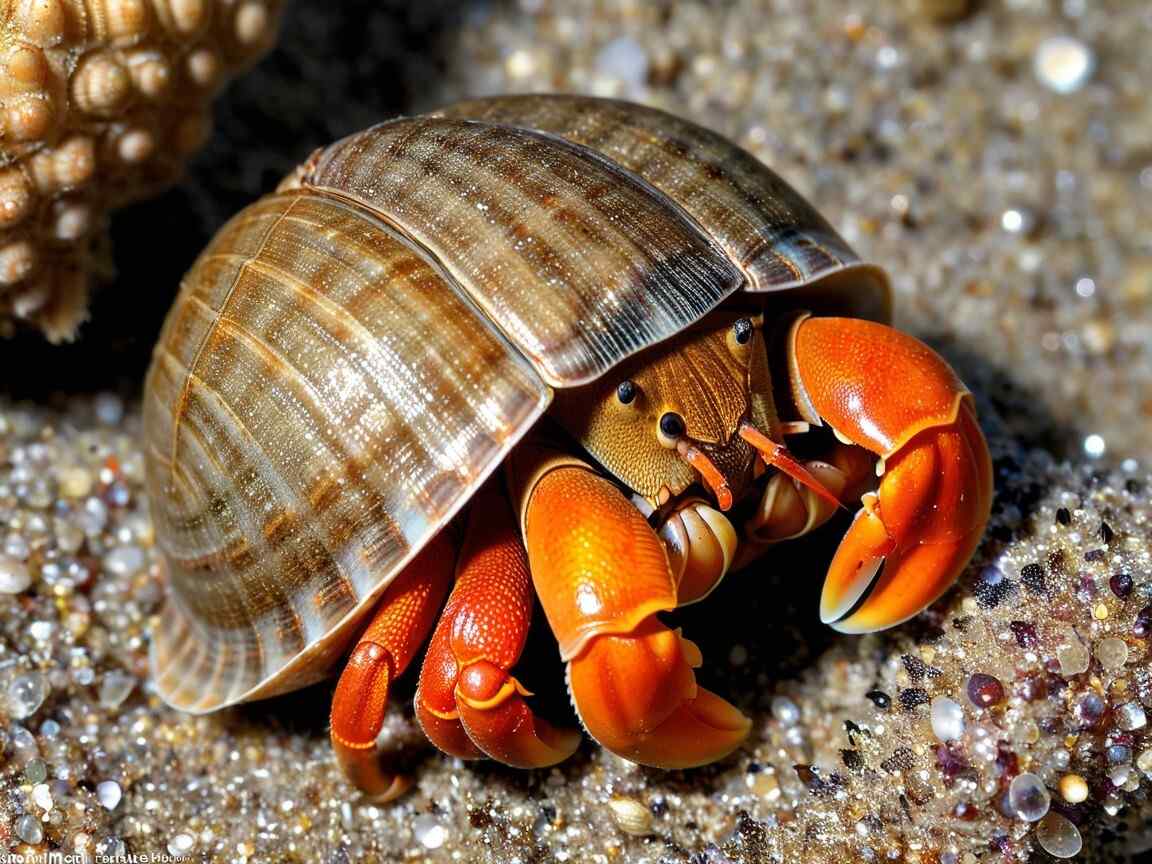hermit crab labeled: Easy Guide!

Hermit crabs are interesting creatures with unique body parts that help them survive in the wild. Here’s a simple breakdown of their anatomy:
Classification
Hermit crabs belong to the Animalia Kingdom and the Arthropoda Phylum. One common species is the Coenobita clypeatus, also called the purple pincher or Caribbean crab, found in places like southern Florida and the Caribbean.
Key Body Parts
Antennae
Hermit crabs have two pairs of antennae. The outer pair helps them feel objects around them, while the inner pair helps them taste and smell.
Eyes
Hermit crabs have compound eyes on movable stalks that help them detect small movements around them.
Maxillipeds (Mouthparts)
These three pairs of appendages help hermit crabs move food to their mouth and also keep their body clean by grooming.
Exoskeleton
The exoskeleton is a hard outer shell that protects the crab. As they grow, hermit crabs shed this shell and grow a new one.
Claws (Chelipeds)
Hermit crabs have two claws. The larger left claw is used for protection and sealing the crab inside its shell. The smaller right claw is for feeding and scooping water.
Legs (Pereiopods)
Hermit crabs have ten legs. The second and third pairs are used for walking. The fourth pair helps them enter and exit their shell. The fifth pair is used to clean their gills.
Head and Back (Cephalothorax)
The cephalothorax is the combined head and back of the hermit crab, protected by the hard carapace.
Gills
Hermit crabs breathe using their gills, which are located on the sides of their body. The gills need to stay moist to work properly.
Abdomen and Tail
The abdomen (or tail) is the soft, vulnerable part of the crab that is protected by its shell. It holds important organs for digestion and reproduction.
This simple overview of a hermit crab’s anatomy highlights how each part works together to help the crab thrive in its environment.
How do you identify a hermit crab?
You can identify a hermit crab by its distinctive hard shell (which it carries on its back) and soft, curved abdomen that it tucks inside the shell. Unlike true crabs, hermit crabs have one side of their body larger and more developed than the other, and they use two pairs of antennae and claws for various tasks. They also have compound eyes on movable stalks and can be seen scurrying around on land or in shallow water.
Why does my hermit crab have one big claw?
Hermit crabs typically have one large claw (cheliped) and one smaller claw. The larger left claw is usually used for defense and for sealing the entrance of their shell to protect themselves. The smaller right claw is used for feeding and for tasks like cleaning or scooping water.
Can hermit crabs bite or pinch you?
Yes, hermit crabs can pinch with their claws, but they are generally not aggressive. Their bites or pinches are more of a defensive response if they feel threatened. It’s usually not painful, but it can be uncomfortable. Hermit crabs use their larger claw for defense and might pinch if handled roughly or without caution.
Why is a hermit crab not a true crab?
Hermit crabs are not true crabs because they belong to a different suborder called Anomura, while true crabs belong to the suborder Brachyura. One key difference is that true crabs have a broad, flat body with all their legs of equal size, while hermit crabs have a soft abdomen that they protect by carrying a shell, and their legs are specialized for moving in and out of the shell. Additionally, hermit crabs often have asymmetrical claws, while true crabs typically have two claws of the same size.
Conclusion:
In short, hermit crabs are cool creatures with some interesting features. They have a soft body that they protect inside a shell, and they use their claws for defense and feeding. They have two pairs of antennae to sense their surroundings and compound eyes to spot movement. Hermit crabs breathe through gills, and their legs are designed to help them move in and out of their shell. Unlike true crabs, they have one big claw and one smaller one. Overall, their unique body parts help them survive in the wild!
Also Read:



